
Do you want to make your search engine rankings higher for targeted keywords?
Well, we have got great techniques that are no nonsense.
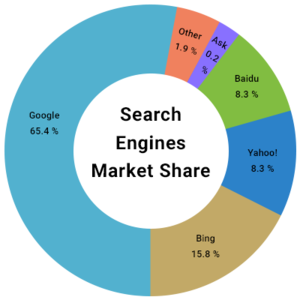
Search engine rankings primarily rely on search engines. And google being the most used search engine, shares 65.4% of the global search engine market share, it becomes important to find out the factors which lead to rank on the first position. Google uses almost over 200 ranking factors, from this you can imagine how complex the search engine ranking algorithm is.
As we’re talking about search engine, let me inform you that

Google produced 86% of all organic search visits in the US and 90% of mobile organic search visits . And Google gets over 100 billion searches a month worldwide.
Where do you focus when you’re trying to improve your search engine rankings?
Most people focus a large proportion of time on “Keyword Optimization” and still not get expected results.
There are many other factors you may need to consider that affect search ranking.
Let’s start with points that you must keep your eye on to improve your website’s ranking.
[1] Conduct a full site audit to determine issues
To find a particular solution you need to examine the situation first. Same applies here.
For analysis, there are many tools which are absolutely free and which gives you multiple information but you need to know the right factors which can affect your rankings adversely. So here are some factors that need your attention in order to improve rankings.
-
- Site Performance
Site performance is an important ranking factor as the visitor have a very limited attention span. And, if a site takes more time to load, they will leave the site.
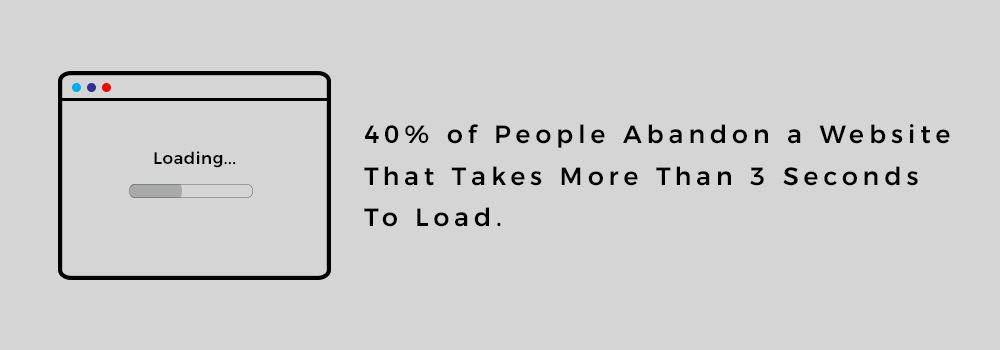
You can boost your site loading speed by using a CDN, compressing images and switch to faster hosting. And make sure your site doesn’t take more than 4 seconds to load.
You can check your website’s loading speed using sites like Google, Pingdom or GTMetrix. Here you will not only receive loading speed of website but also other parameters through which you can increase website speed.
-
- Robots.txt
Robots.txt file instructs search engine crawlers to stop accessing sections of the website. This can be used to block crawlers from accessing a part of the website you don’t want to be crawled.
So, you manually have to check the file whether it is restricting crawlers to access an important section of the website or not.

-
- Robots Meta Tags
Robots meta tag tell robots not to index the content of a page and/or not to crawl intended URL but may keep a specified page in the index and display it in results.

-
- HTTP Status Codes
During website crawl, you need to identify and fix URLs that return errors like 4** or 5**. When a broken URL’s corresponding page is no longer available then redirect it to a relevant page.
Note: Use 301 HTTP redirects and not 302 HTTP redirects, meta refresh redirects, or JavaScript-based redirects.
-
- XML Sitemap
XML sitemap provides an easy path to search engine crawlers so that they can easily find all of your website pages. Check if your sitemap is submitted to the webmaster and submit it in a specific format that is accepted by search engines.
-
- Site Architecture
It is the most overlooked optimization methods. Evaluate the site’s hierarchy and check how well the pages are linked and prioritize important pages accordingly. Make sure URL structure matches your navigation hierarchy.
-
- Flash and JavaScript Navigation
Thrilled to discover Google has been working on improving how they crawl and index rich content (such as Flash and JavaScript). But some complications still persist, so better to avoid Flash and JavaScript navigation.
Just for eg: To evaluate your website’s usage of JavaScript navigation, you can perform two separate site crawls: one with JavaScript disabled and another with it enabled. Then, compare the corresponding link graphs to identify sections of the website that are inaccessible without JavaScript.
-
- Site: Command & Page Searches
A Site command allows to search for content on a particular website. This command gives you a rough estimate for the number of pages that are being indexed by a search engine. While performing “site:” queries you should find your site’s high priority pages in the index.

-
- Brand Search
Once you verify whether your high priority pages have been indexed, you should check whether your website is ranking well for your company’s name.
Search for your company name. If the website appears at the top of the results, no need to worry. If not, the site might be penalized or it can be any another reason.
-
- Search Engine Penalties
Hope you don’t have to come across this. Though one can escape from this by making right changes. If you have actually been penalized then just identify reasons for the penalty. After identifying it, fix it and request for reconsideration.
Every blogger and techie know about “WordPress”.
Do you know, WordPress was penalized by Google for spam? Yes, you heard it right.
Long back, WordPress once worked as host to pages for a third-party company that was after higher rankings. Those rankings were easier to achieve if the articles were within the WordPress site itself. The pages also had hidden links to other content.
[2] On Page SEO or Tags
-
- Title Tag
You could use targeted keywords in starting of title tag, it is beneficial but not mandatory. Usage of modifiers like “best”, “Top”, “Cheap”, “Reviews”, “Legit” will be beneficial for ranking of long tail versions of your targeted keywords.
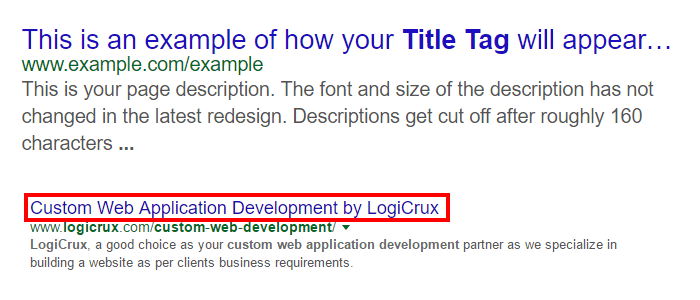
-
- Heading Tags
Enclose your title or blog post title in H1 headline tag. Also, wrap your H2 tag in subheading and you can also enclose targeted keyword in H2 tag. Use other heading tag viz. H3, H4, H5 to highlight various headings.
-
- Outbound Links
These links are going to direct you to another specific web page or site. Link it to authority sites only because the sites which we have linked to, has a greater impact on your site. Try to add 2-4 outbound links per 1000 words.
-
- LSI keywords
LSI keywords are primarily keywords that are semantically related to your primary keyword. They are just similar in meaning and not synonyms.
It is used to check page’s relevancy or quality.
-
- Image Optimization
Images are not readable to search engines. So optimizing it can give information about the image and helps to rank in organic search. Optimize your images by adding targeted keywords in filename and alt tag.
-
- URLs
URLs portray a website/webpage to search engines and visitors. Keeping them relevant and accurate is the key to rank well. Your URL should semantically make sense and include targeted keywords in your URL.
-
- Dwell time and Social sharing buttons
It is the amount of time spent on a page before returning to the search results. That’s why Google uses dwell time to check the quality of a page. So to increase dwell time you can write content that keeps visitors reading.
Social share may generate more views on your content. So there may be some chances of more traffic or links to the site.
[3] Content
It is a critical part of the website which can bring traffic, improve rankings, and a lot more.
Content is everything that is being encountered as a part of the user experience on sites. Content can be bifurcated into two forms. Those are textual and digital.
Textual contains everything that is text. Longer textual content tends to rank higher on Google’s first page for your targeted keywords and brings you more long tail traffic. Stand out by having at least 1000 words in your post.
“Google wants the text content to be readable, high-quality and trustworthy”. So feed what search engine wants and your search engine rankings will gradually increase.
Focus on following points while generating text content.
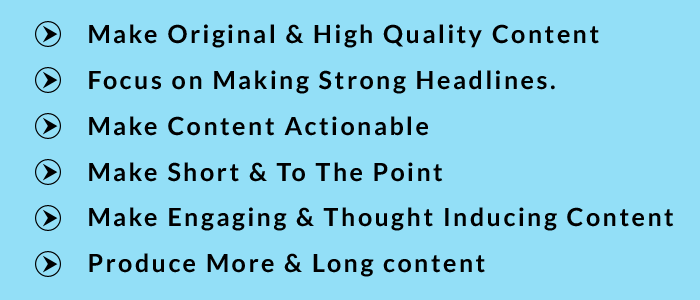
Digital is a type of content that is stored in the form of digital data. Forms of digital content include video, image (infographics), audio, etc.
Image, a digital form of content, depicts visual perception to the user. It is the most eye-tracking part of a content to which user pays close attention.
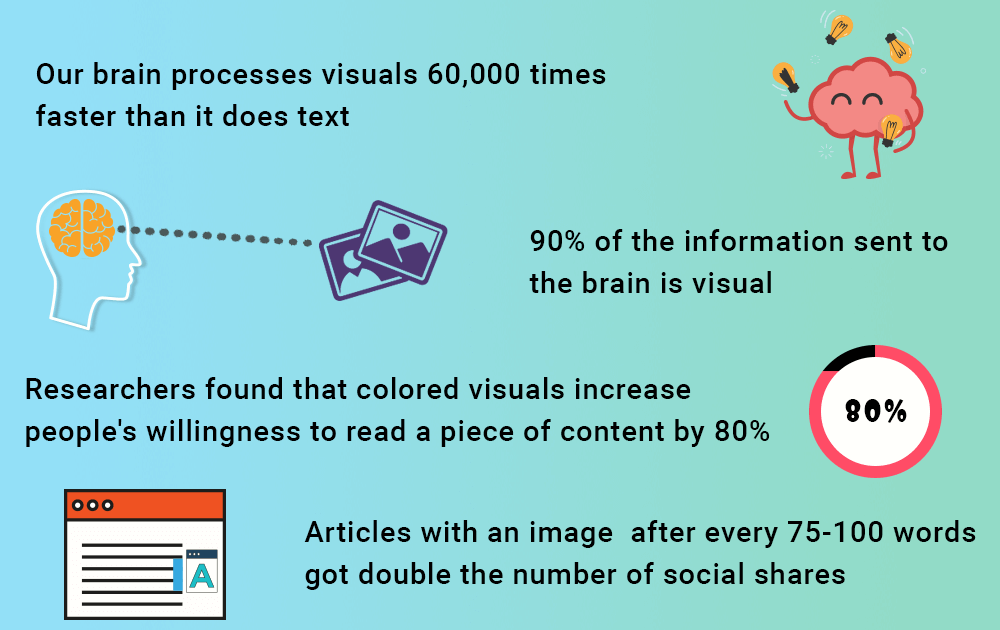
So use images to make your content visually strong.
Video and audio can help you to make your content rich and informative. A Video is the trending strategy used by marketers. 55% of people consume video content thoroughly and 43% of people want to see more video content from marketers. (HubSpot, 2016)
[4] Keywords
Try adding keywords in the first 100-150 words of your post/article.
You can place keyword in
- Main Title
- First Paragraph
- Image Alt Attributes
- Permalink
- Sub heading H2-H3 (semantic keywords)
- Bold or Italic (Important and Related Keywords)
To improve rankings, this is the best technique you can use. For that, you need to know the power of your rivals. You might be thinking how to conquer it?
Well, there are hundreds of tools to get information about keywords your competitors are ranking.
One can use Ahrefs, SEMrush, SpyFu and many others are available. SEMrush is available for free, and it reveals the whole strategy to you which can be used to improvise your techniques. SEMrush yields important things like keyword research, site audit and backlink analysis.
[5] Internal Linking
Internal links refer to hyperlinks that link to another page in the same domain. Having more inbound links only to the homepage can increase bounce rate. This can be reduced with internal linking.
Also, Internal linking helps you to improve page authority and also makes your internal pages more indexable. When the term internal linking comes, you can have a look at Wikipedia. It is the best example of internal linking.
[6] Responsive & Mobile Friendly
On April 21, 2015, Google released a remarkable new mobile-friendly ranking algorithm that’s designed to give a boost to mobile-friendly pages in Google’s mobile search results.
Also,
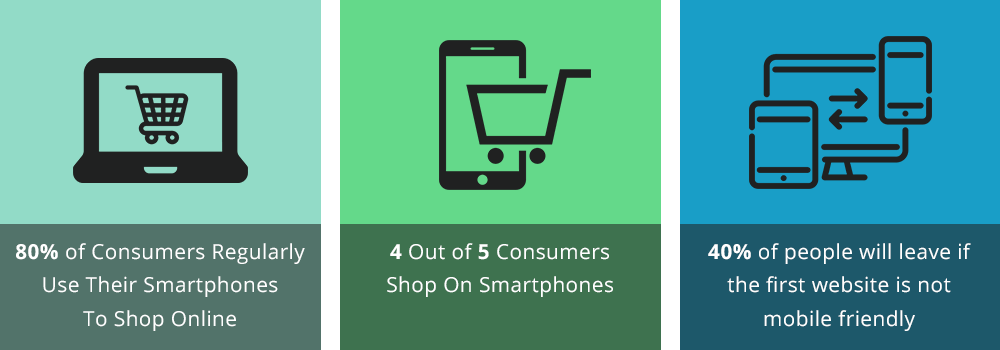
Now, more people use mobile devices to access the web. Four out of five consumers shop on smartphones (TechCrunch). 80% of consumers regularly use their smartphones to shop online and 40% of people will choose a different search result if the first website is not mobile friendly. Above statistics state that there is immense potential for increased search traffic in making your website responsive and mobile-friendly.
Conclusion:
If you follow the points and techniques mentioned above you can definitely see changes in your rankings. Things changes in SEO on a day-to-day basis, so keep up to date with those changes by subscribing to our blog post. Soon coming with a new post.
Hopefully, this guide has helped you.
Did we miss out anything important? Please leave your comments below and let us know.

Pingback:Mishapatel | Pearltrees
Pingback:SEO | Pearltrees
Pingback:Why Many Designs Fail and What You Can Do to Avoid It - ThemeVault
Pingback:How to Build Website using Website Template - ThemeVault
Pingback:essayforme
Pingback:writeaessay